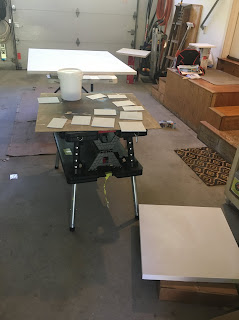Went onto Google Maps and did a walkabout through our old neighborhood in Seattle of 30+ years and felt the tugs... some things have changed, some have not. But the familiar is what i miss.
I know every crack in the sidewalk of the old neighborhood, the occupants of every house. As much as I bitched and moaned about the things there that were making me nuts, ie: seaplanes right overhead, cut through traffic down our narrow street, houses 16 feet away fron each other, windstorms year round, and incessant grey skies in winter and the smell of burning forests in summer... there was the unaccounted-for familiar. The faces of friends, the feeling of connectedness, the sheer education of the population. I didnt weigh them appropriately.
The pandemic has interrupted the healing that needs to take place when you rip old roots up and move your tree of life. I am reminded of an old favorite Harry Chapin song: “ and now she’s acting happy, inside her handsome home, and me.. im flyin’ in my taxi, takin’ tips and getting stoned..”
It is not a perfect soliloquy (right word?) I love many things about the new life here. But the pandemic and its extension into the forseeable future by deniers and those who do not take it seriously means the healing of the roots and their nourishment are delayed, and unnecessarily delayed indefinitely so that the roots bleed longer than is healthy, and maybe longer than is recoverable.
We knew the change would mean a time of re-rooting would be necessary, and all was anticipated. Everything would be interrupted while new roots would be introduced. All helped by old friends and family visits each bringing thier own style of fertilizer. But I find myself staring up into the grey sky today and longing for that familiar... any familiar beyond the lawn. The growth was stopped. New connections and friends retreated (mea culpa) and time stopped having any meaning. The problem is at this stage of life, is that time is no longer kind.
The oaks at the top of the rise on 29th Ave NE are still there, the house looks the same and i imagine the new occupants are doing well. A glance at the Bryant Cafe on 65th is still the hub of the neighborhood, even if the patrons have changed some, and I hope Sarah has new favorites.
I am happy to have great horned owls speaking to each other at dusk here, and the profound quiet in the evening. I enjoy biking to the Rail Trail, and walking on the beach. But I miss the connections. I miss people. And when I look at who we are and what we are embracing I am hungry for hope... hope in this shifting cultural landscape that is so unwelcoming to roots of any kind.
Please vote. If you do nothing else this year, vote.











